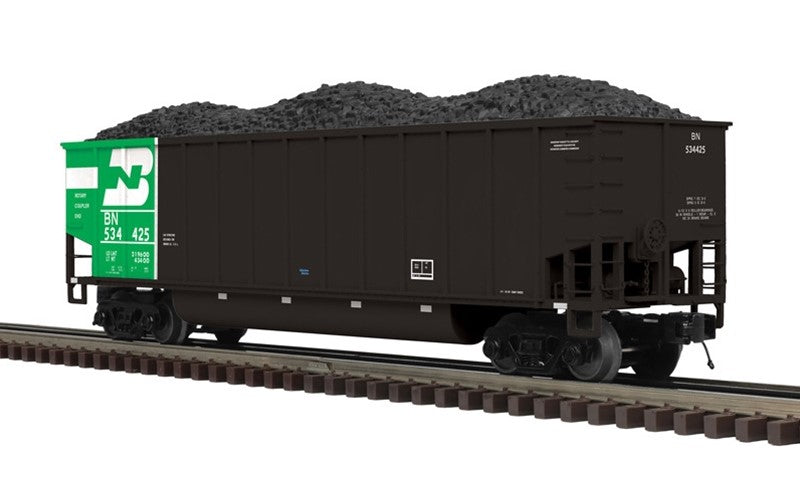Resources
About & Contact Us


Atlas O 3002380 - Premier - Coalporter Hopper "Burlington Northern" (2-Rail)
- Sale price
- $ 76.46
- Regular price
- $ 84.95
- You save
- $ 8.49 (10%)
Product Information
| Announced Date: | Feb 2023 |
| Released Date: | Est. 4th Quarter 2023 |
| Individually Boxed: | N/A |
- Road Name: Burlington Northern (Black/Green/White)
- Road Number: 534425, 534444, 534453, 534455
- Product Line: Premier
- Scale: O Scale
- System: 2-Rail
Features:
- Intricately Detailed Durable ABS Body
- Metal Wheels and Axles
- Operating Interior Lighting
- Die-Cast 4-Wheel Trucks
- Colorful, Attractive Paint Schemes
- Operating Die-Cast Metal Couplers
- Fast-Angle Wheel Sets
- Needle-Point Axles
- 1:48 Scale Dimensions
Overview:
The Coalporter is one of the latest evolutions in the more-than-150-year history of the American coal hopper. But technically speaking, it’s not a hopper. It’s a high-sided gondola, because it lacks the bottom-opening doors that characterize a true hopper. The only way to unload a Coalporter is to turn it upside down, which is exactly what happens at the rotary unloading facilities at factories and power plants served by Coalporter trains.
The Coalporter was developed by Bethlehem Steel Car in 1978, in an effort to create a higher-capacity, more efficient coal car. The traditional bottom hoppers were replaced by twin tubs, or troughs, that filled the space between the trucks. These increased the cubic capacity of the car and gave the added advantage of a lower center of gravity for better tracking. These original Coalporters were steel-bodied, but a drop in aluminum prices in the mid-1980s opened the door to the introduction of the aluminum-bodied BethGon Coalporter in 1985.
The switch to aluminum shaved five tons off the car’s weight — meaning that each car could carry five tons of additional payload, or an additional 575 tons of coal in a typical Coalporter unit train. Coalporters generally operate in solid unit trains. One end of each car is equipped with a rotary coupler, to allow a train to be fed through a rotary unloader without uncoupling the cars. Our highly detailed Premier model duplicates this prototype feature and also offers separately added metal grab irons and a removable coal load.
We Accept
Recommended for You
Browsing history
- Choosing a selection results in a full page refresh.
Get in touch
177 W Main St
Atlanta, IN 46031
765-292-2022
support@mrmuffinstrains.com
Keep in Touch
Sign up for our newsletter and be the first to know about coupons and special promotions.
Country/region
© 2025, MrMuffin'sTrains Powered by Shopify
